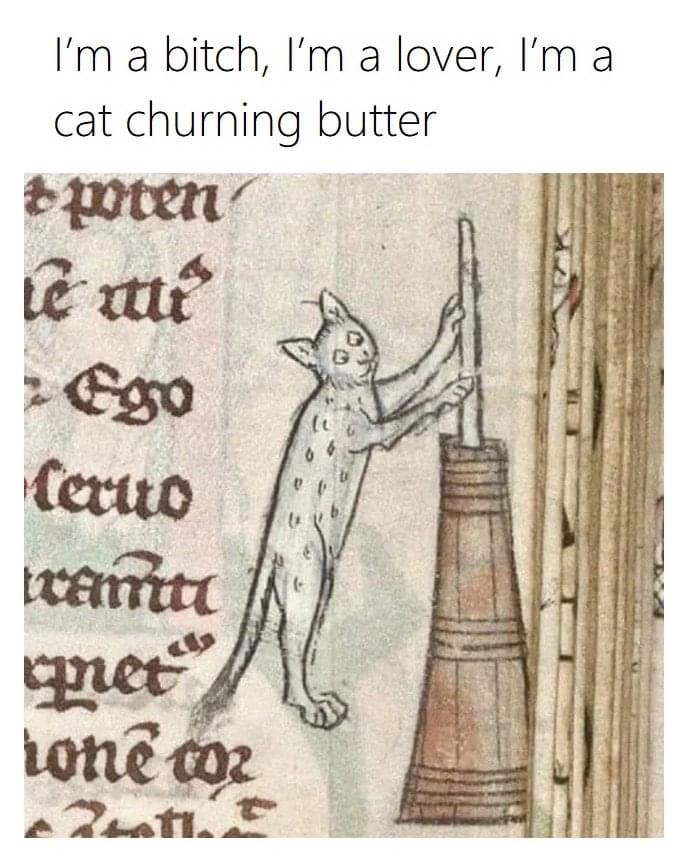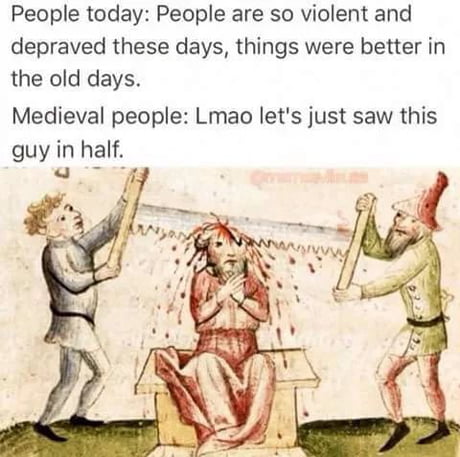Summary
Em and Jesse are back with more medieval meme review. Join us as we discuss martyrdom, marginalia, The Seventh Seal, and the Bayeux Tapestry.
Notes
Martyrdom sword through throat:
2/ St. Sebastian. Artists love him!
Just to be clear, “It’s difficult to assert that there were any gay men before Walt Whitman” is a joke about how historians tend to act. Generally, if you look at the comments on Wikipedia, it can be difficult to assert that people are gay after Whitman too—there was one actor who lived with his partner very openly for thirty years, and on the talk page people were still debating if he should be categorized as gay. This about someone who died in 1993.
The Last Judgement: https://www.museivaticani.va/content/museivaticani/en/collezioni/musei/cappella-sistina/giudizio-universale.html
Rubens’s St. Sebastian: https://en.wikipedia.org/wiki/St_Sebastian_(Rubens)
3/ https://en.wikipedia.org/wiki/The_Seventh_Seal
 Death was played by a guy named Bengt Ekerot. No one seems to know how tall he was, but Max Von Sydow was apparently about 6’4″.
Death was played by a guy named Bengt Ekerot. No one seems to know how tall he was, but Max Von Sydow was apparently about 6’4″.
4/ “Give a shoutout to Sandman…” We recorded this in 2022, long before the allegations against Neil Gaiman became public. 🙁 We condemn his behavior in the strongest possible terms. [Terrible people can make amazing art that contradicts their own actions in their personal lives. It’s really unsatisfying, but an important (and unfortunate) fact about human nature.–Jesse]
5/ https://en.wikipedia.org/wiki/Albertus_Pictor
6/  David Jenkins was the creator of Our Flag Means Death.
David Jenkins was the creator of Our Flag Means Death.
Meredith Brooks, “Bitch.” https://genius.com/Meredith-brooks-bitch-lyrics
7/ The Rothschild Canticles: https://collections.library.yale.edu/catalog/2002755 [scroll down to page 148r]. The book takes its name from Edmond de Rothschild, rather than whoever commissioned it. E. de R. (aka Baron Abraham Edmond Benjamin James de Rothschild, 1845–1935) was indeed a member of the powerful banking family and subject of many anti-Semitic conspiracy theories you are thinking of. Where it came from before that is unclear, at least according to the provenance information provided by Yale.
Citation: MS 404, folio 148 recto.
John Boswell was a Yale scholar who wrote a book called Same-Sex Unions in Premodern Europe where he argued that the early Church had a ritual called “adelphopoiesis” (brother-making) that was essentially a marriage ceremony for same-sex couples. (This being the thing back before the Church felt like it cared much about who married whom, which is a rather newer thing than they would like to admit.) The rite still happens today—here (https://www.npr.org/2024/04/09/1243606135/a-look-at-the-ancient-practice-that-turned-friends-into-family) is an NPR article about two women who underwent the ritual in 1985. (And history will say they were roommates.) (Except in this case it seems as though they were. Sorry.) (The point being that the rite is perceived somewhat differently today. Or at least by NPR.)
Boswell died in 1994, about a decade after Foucault.
Podcast: Play in new window | Download



